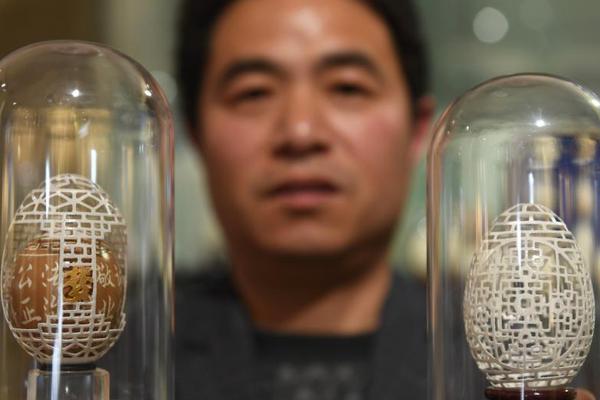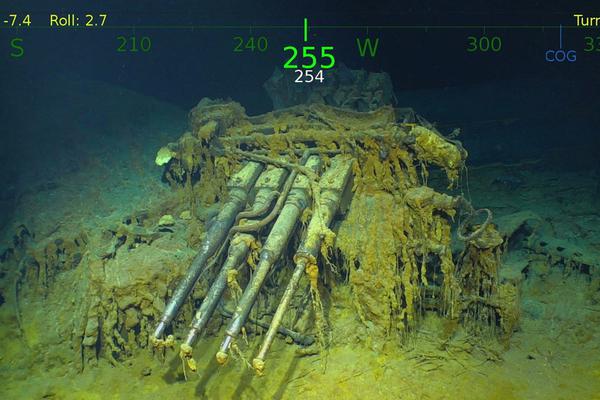
1. After reinstalling the system, it can be repartitioned. The specific operation steps are as follows: Step 1, double-click the "My Computer" icon to open the "My Computer" interface as shown in the figure below. In the second step, right-click on "Computer" and click the "Management" tab, as shown in the figure below.
2. If the system is equipped with multiple hard disks, the user will be asked to choose which hard disk needs to partition after returning.Select the hard disk that needs to be partitioned and press the Enter key directly. Select the partition format in the interface that appears. Generally, select the FAT32 partition format.
3. Step 1: Insert the USB flash drive and start the computer. Step 2: Select the USB flash drive as the boot device and enter the system installation interface. Step 3: Select "Custom Installation" or similar options. Step 4: Select the hard disk to install the system and click the "New" button. Step 5: Set the size of the partition as needed and select the file system type.
4. Select the C disk partition in the disk management interface, and right-click to select the "Compressed Volume" option. Compressed volume. At this time, the disk utility will automatically check the space that the selected partition can be used for compression, the time taken and the hardware performance and disk space of the computer.

1. Steps Right-click on "This Computer", select "Management", and then select "Disk Management" in the left list of the "Computer Management" window.In Windows 10, you can also right-click on the Start menu and directly select the "Disk Management" function.
2. The first step is to enter the disk information interface. Right-click on the computer and click Manage. After entering the management computer interface, select disk management. After entering, you can partition the disk accordingly. System Partition Computer Illustration 1 Partition Computer Illustration 2 Step 2, calculate the size and disk character of your partitioned area.
3. After entering the win10pe system desktop, double-click more tool folders on the desktop, find and double-click the partition tool DiskGenius icon in the folder, and open the tool. When the hard disk is idle, click the quick partition button to partition the hard disk.
4. The transmission speed of solid-state drives is much faster than that of ordinary hard disks, and it is generally used as a system disk to install the system.
5. After making a USB disk boot disk on the available computer, copy the downloaded system iso file directly to the GHO directory of the USB disk. The iso image does not need to be decompressed.
6. When using a USB flash drive to install the system, we can partition through the following steps: Step 1: Insert the USB flash drive and start the computer. Step 2: Select the USB flash drive as the boot device and enter the system installation interface. Step 3: Select "Custom Installation" or similar options. Step 4: Select the hard disk to install the system and click the "New" button.
Step 1: Insert the USB flash drive and start the computer. Step 2: Select the USB flash drive as the boot device and enter the system installation interface.Step 3: Select "Custom Installation" or similar options. Step 4: Select the hard disk to install the system and click the "New" button. Step 5: Set the size of the partition as needed and select the file system type.
First of all, make a USB disk boot disk, restart the computer, and press the shortcut key to select the USB disk to start when booting. Select "[02] Run Cabbage Win8PE Anti-Blue Screen Version (New Computer)" and enter the selection to enter PE.
Set the partition size Windows allows users to create partitions with a minimum space of 8MB and no space limit (if there is enough allocatable space). The unit here is megabytes (MB), and users can allocate according to the allocatable space of the disk and personal needs.
Set upAfter the USB flash drive starts, save and restart the computer to enter the 01 pe interface, and select the disk partition tool. Select the new hard disk and click Quick Partition. Generally, it is recommended to divide it into 4 areas. The C disk puts the main system, the D disk installs the required software and applications, and the EF disk plays its own different files, videos, music, etc.
1. Click the "Start" button, right-click the "Computer" option in the "Start" menu, and select "Manage" in the pop-up menu. Open the computer management menu. If the current user is using a standard account, the user will be asked to enter the administrator account credentials.
2. The first step is to double-click the "My Computer" icon to open the "My Computer" interface as shown in the figure below.In the second step, right-click on "Computer" and click the "Management" tab, as shown in the figure below. Step three, enter the "Management" interface, click and select "Disk Management", as shown in the figure below.
3. Method 1: Windows 10 disk management software Right-click "Computer" and select the "Management" tab; open the "Computer Management" window. Select "Storage Management" to open the "Disk Management" page.
Steps Right-click on "This Computer", select "Management", and then select "Disk Management" in the left list of the "Computer Management" window. . In Windows 10, you can also right-click on the Start menu and directly select the "Disk Management" function.
First, right-click the unallocated space and click New Simple Volume, pop up the next step, enter the new value, and then the next step. New value = (unallocated total space value ÷ number of partitions). That is = (219÷2) ×1024 (5) has now created a partition, and the last partition is being created below.
First of all, we find this computer icon on the desktop of the Win10 system. Right-click this computer to select management. As shown in the figure below 2 After entering the computer management interface, click Disk Management in the left column, as shown in the figure below 3 Next is the partition process. First of all, we find that the disk still has One.
How to partition win10 1 Before partitioning, we must enter the disk management of the system. There are two ways to enter disk management.One is to enter disk management through computer properties. The second is to directly right-click the windows key (windows+X) to select disk management.
OKX app-APP, download it now, new users will receive a novice gift pack.
1. After reinstalling the system, it can be repartitioned. The specific operation steps are as follows: Step 1, double-click the "My Computer" icon to open the "My Computer" interface as shown in the figure below. In the second step, right-click on "Computer" and click the "Management" tab, as shown in the figure below.
2. If the system is equipped with multiple hard disks, the user will be asked to choose which hard disk needs to partition after returning.Select the hard disk that needs to be partitioned and press the Enter key directly. Select the partition format in the interface that appears. Generally, select the FAT32 partition format.
3. Step 1: Insert the USB flash drive and start the computer. Step 2: Select the USB flash drive as the boot device and enter the system installation interface. Step 3: Select "Custom Installation" or similar options. Step 4: Select the hard disk to install the system and click the "New" button. Step 5: Set the size of the partition as needed and select the file system type.
4. Select the C disk partition in the disk management interface, and right-click to select the "Compressed Volume" option. Compressed volume. At this time, the disk utility will automatically check the space that the selected partition can be used for compression, the time taken and the hardware performance and disk space of the computer.

1. Steps Right-click on "This Computer", select "Management", and then select "Disk Management" in the left list of the "Computer Management" window.In Windows 10, you can also right-click on the Start menu and directly select the "Disk Management" function.
2. The first step is to enter the disk information interface. Right-click on the computer and click Manage. After entering the management computer interface, select disk management. After entering, you can partition the disk accordingly. System Partition Computer Illustration 1 Partition Computer Illustration 2 Step 2, calculate the size and disk character of your partitioned area.
3. After entering the win10pe system desktop, double-click more tool folders on the desktop, find and double-click the partition tool DiskGenius icon in the folder, and open the tool. When the hard disk is idle, click the quick partition button to partition the hard disk.
4. The transmission speed of solid-state drives is much faster than that of ordinary hard disks, and it is generally used as a system disk to install the system.
5. After making a USB disk boot disk on the available computer, copy the downloaded system iso file directly to the GHO directory of the USB disk. The iso image does not need to be decompressed.
6. When using a USB flash drive to install the system, we can partition through the following steps: Step 1: Insert the USB flash drive and start the computer. Step 2: Select the USB flash drive as the boot device and enter the system installation interface. Step 3: Select "Custom Installation" or similar options. Step 4: Select the hard disk to install the system and click the "New" button.
Step 1: Insert the USB flash drive and start the computer. Step 2: Select the USB flash drive as the boot device and enter the system installation interface.Step 3: Select "Custom Installation" or similar options. Step 4: Select the hard disk to install the system and click the "New" button. Step 5: Set the size of the partition as needed and select the file system type.
First of all, make a USB disk boot disk, restart the computer, and press the shortcut key to select the USB disk to start when booting. Select "[02] Run Cabbage Win8PE Anti-Blue Screen Version (New Computer)" and enter the selection to enter PE.
Set the partition size Windows allows users to create partitions with a minimum space of 8MB and no space limit (if there is enough allocatable space). The unit here is megabytes (MB), and users can allocate according to the allocatable space of the disk and personal needs.
Set upAfter the USB flash drive starts, save and restart the computer to enter the 01 pe interface, and select the disk partition tool. Select the new hard disk and click Quick Partition. Generally, it is recommended to divide it into 4 areas. The C disk puts the main system, the D disk installs the required software and applications, and the EF disk plays its own different files, videos, music, etc.
1. Click the "Start" button, right-click the "Computer" option in the "Start" menu, and select "Manage" in the pop-up menu. Open the computer management menu. If the current user is using a standard account, the user will be asked to enter the administrator account credentials.
2. The first step is to double-click the "My Computer" icon to open the "My Computer" interface as shown in the figure below.In the second step, right-click on "Computer" and click the "Management" tab, as shown in the figure below. Step three, enter the "Management" interface, click and select "Disk Management", as shown in the figure below.
3. Method 1: Windows 10 disk management software Right-click "Computer" and select the "Management" tab; open the "Computer Management" window. Select "Storage Management" to open the "Disk Management" page.
Steps Right-click on "This Computer", select "Management", and then select "Disk Management" in the left list of the "Computer Management" window. . In Windows 10, you can also right-click on the Start menu and directly select the "Disk Management" function.
First, right-click the unallocated space and click New Simple Volume, pop up the next step, enter the new value, and then the next step. New value = (unallocated total space value ÷ number of partitions). That is = (219÷2) ×1024 (5) has now created a partition, and the last partition is being created below.
First of all, we find this computer icon on the desktop of the Win10 system. Right-click this computer to select management. As shown in the figure below 2 After entering the computer management interface, click Disk Management in the left column, as shown in the figure below 3 Next is the partition process. First of all, we find that the disk still has One.
How to partition win10 1 Before partitioning, we must enter the disk management of the system. There are two ways to enter disk management.One is to enter disk management through computer properties. The second is to directly right-click the windows key (windows+X) to select disk management.
Binance Download for PC Windows 10
author: 2025-02-28 09:30 Binance download Android
Binance download Android
479.97MB
Check OKX review
OKX review
651.56MB
Check Binance market
Binance market
947.42MB
Check Binance app
Binance app
854.13MB
Check Binance download
Binance download
718.13MB
Check Binance US
Binance US
665.52MB
Check OKX Wallet
OKX Wallet
318.28MB
Check Binance Download for PC Windows 10
Binance Download for PC Windows 10
218.85MB
Check OKX Wallet Sign up
OKX Wallet Sign up
388.12MB
Check Binance download
Binance download
444.99MB
Check Binance market
Binance market
718.22MB
Check Binance app download Play Store
Binance app download Play Store
212.12MB
Check Binance APK
Binance APK
574.42MB
Check Binance download iOS
Binance download iOS
869.25MB
Check OKX Wallet apk download latest version
OKX Wallet apk download latest version
218.61MB
Check Binance APK
Binance APK
621.34MB
Check Binance exchange
Binance exchange
488.45MB
Check Binance app
Binance app
887.26MB
Check Binance Download for PC
Binance Download for PC
285.74MB
Check Binance download APK
Binance download APK
838.74MB
Check Binance download
Binance download
726.42MB
Check OKX download
OKX download
418.53MB
Check Binance app
Binance app
383.12MB
Check Binance download Android
Binance download Android
485.29MB
Check OKX Wallet
OKX Wallet
638.99MB
Check Binance login
Binance login
575.22MB
Check Binance download
Binance download
211.54MB
Check OKX Wallet Sign up
OKX Wallet Sign up
639.62MB
Check Binance login
Binance login
469.35MB
Check okx.com login
okx.com login
468.52MB
Check OKX app
OKX app
889.16MB
Check Binance app download Play Store
Binance app download Play Store
487.69MB
Check Binance download APK
Binance download APK
615.83MB
Check Binance login
Binance login
372.83MB
Check OKX download
OKX download
318.43MB
Check Binance app download Play Store
Binance app download Play Store
644.71MB
Check
Scan to install
OKX app to discover more
Netizen comments More
1138 俯仰无愧网
2025-02-28 09:35 recommend
1899 五侯七贵网
2025-02-28 09:15 recommend
1094 地丑德齐网
2025-02-28 08:48 recommend
2390 语重心长网
2025-02-28 07:38 recommend
1694 计日程功网
2025-02-28 07:23 recommend